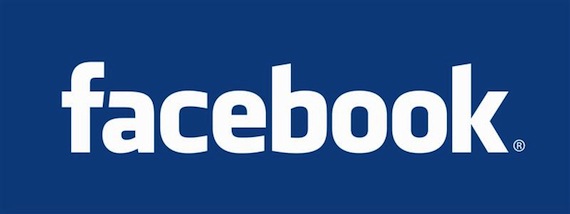2010年社交网站Facebook年收入或突破20亿美元?
多年以前,多数硅谷公司普遍认为经营社交网站不仅费用高昂而且利润空间狭小。因此哪怕Facebook社交网站在经营之初用户数量呈百万增长,许多业内人士仍不看好这一领域。
然而从2007年起,Facebook等社交网站的年收入开始呈翻倍增长趋势。据游戏邦了解,Facebook社交网站2007年的年收入是1亿5000万美元,2008年则稍微不足3亿美元,到了2009年Facebook年收入高达8亿美元。今年,有部分报导预计Facebook本年度营收可能达到20亿美元。而前段时间,Facebook公司自己给出的年收入估值也在11亿美元左右。
那么,Facebook是如何实现如此巨额的盈收的呢?主要渠道有三:广告收入,投资回报,虚拟货币Credits的盈利。今年以来,Facebook社交网站用户由原来的3亿7500万上升至5亿7500万。同时Facebook用户的参与度很高,据称50%的Facebook坚持每天登录该社交网站。
Facebook社交网站注重提高用户的参与性,收集更多的用户资料。如此一来,有利于广告商接近目标客户群。在此值得一提的是,Facebook社交网站虽然年营收十分可观,但同时需要对网站的软硬件设备投入大量的维护和更新资金,因此知道2009年末,Facebook公司才真正实现纯盈利。
广告
从2008年到2009年,Zynga和其他社交游戏开发公司为接触更多的玩家群体开始使用Facebook自助广告系统。在此期间,这些广告投资支撑起了Facebook社交网站的初步盈利。
此后越来越多的广告商,社交游戏公司加入了这一趋势,甚至连类似Groupon等团购网站也将目光投向了Facebook社交网站。据游戏邦了解,目前Facebook广告的价格呈稳定上升趋势,广大广告商会根据自己所期望的回馈效果适当投资Facebook广告。据称,今天秋天Facebook社交网站美国市场的平均每次点击价高达1美元。
近年来,Facebook为了赚取更多的广告费更是不遗余力。去年,Facebook开发了一款允许第三方服务供应商放置动态广告的广告API。然而该款系统由于发布过晚,当时Omniture等大型搜索市场已经开始提供类似服务了。
与此同时,Facebook也停止了与微软公司的多个广告合作项目。而微软公司开始给旗下的Bing搜索引擎添加社交功能。
品牌广告
多年来,Facebook社交网站一直在提升广告服务上煞费苦心,如今一切努力总算开花结果。现在,许多世界知名品牌都拥有自己的Facebook页面,其中甚至有部分公司通过开发应用将Facebook融入了品牌网站之中,并举办各种品牌活动吸引广大Facebook用户的参与。
尽管用户可免费浏览各种Facebook页面,然而Facebook的广告收费却十分高昂,以主页面广告为例,仅有投资上5万美元的公司才有机会在Facebook主页面刊登广告。另外,Facebook还提出了诸如页面Like数量,点击率等多种条件限制。
同时,为了吸引更多世界知名品牌,Facebook公司还在纽约等地设立办公室,并从其他科技媒介公司聘用有丰富经验的销售人员。尽管目前Facebook公司并没有公布来自大型品牌公司的广告收入,但从Buddy Media等公司的反映看来,Facebook这部分收入也是相当可观的。
Credits
Facebook Credits虽然刚刚投入使用不久,但俨然已经成为未来Facebook盈利的主要渠道之一。今年开始,Facebook明确向所有游戏开发公司表示Credits将成为购买游戏虚拟商品唯一渠道。虽然目前还有大量Facebook游戏没有采用Creidts,但相信在2011年Creidts的使用范围将不断扩大。未来,Facebook Credits还有可能进军网页和手机设备。(本文为游戏邦/gamerboom.com编译,转载请注明来源:游戏邦)
For years, the conventional wisdom in Silicon Valley was that social networks were expensive to run, and didn’t make much money. So as Facebook grew by hundreds of millions of users over the past few years, many people wondered if it was in financial trouble.
Revenue, however, appears to have doubled every year since 2007. And at this point it appears to be increasing even more sharply.
Based on what we and others have heard, we’ve tracked Facebook making $150 million in 2007, slightly less than $300 million in 2008, and somewhere up to $800 million in 2009. A number of reports have suggested that it will make $2 billion or more this year, and we have also heard the same estimates in recent months — up significantly from the $1.1 billion number that the company loosely confirmed earlier this year.
How? Through growth in brand and performance advertising — payoff from years of investment — with revenue from its Credits virtual currency only starting to kick in.
But, aside from bits of information provided by sources close to Facebook, there is very little information available about how the latest revenue numbers actually break down. So here’s a closer look at what we think is going on.
Some high-level points, before we get started. Facebook’s user base has boomed from around 375 million at the beginning of the year to somewhere around 575 million today, with growth happening across the world, in all types of advertising markets (see our Inside Facebook Gold report for more details on Facebook’s worldwide traffic). Engagement is also massive: Facebook says that more than 50% of users visit the site every day.
Facebook’s product development has focused on continuing to increase engagement and gathering more user data — factors that help it target advertising more accurately to more people more often. And although we’re focusing on revenue here, we should also note that Facebook has made significant hardware and software investments to reduce infrastructure costs, helping it to become profitable as of late 2009.
Performance advertising
Zynga and other social gaming companies began utilizing Facebook’s self-serve advertising system in order to reach more users over the course of 2008 and 2009. Along with a smattering of online performance marketers, and a few early adopter small businesses and major brands, the developers provided significant boosts to Facebook revenue in past years.
That trend has continued, with local advertisers, social game developers and group buying sites like Groupon reportedly making massive investments. Advertisers have reported prices steadily rising as more of them figure out how to achieve their desired returns on investment. As of this past fall, the average cost-per click in Facebook’s largest market, the United States, is around one dollar. For developers interested in learning more, we’ll be examining how advertising is working for Facebook and developers at our Inside Social Apps conference in late January.
Facebook has been making a significant new effort to help performance advertisers spend more money. It introduced an advertising API last year that allows third-party service providers to place thousands of automated, highly targeted ads on behalf of clients. While that program has rolled out slowly, big search marketing businesses like Omniture have moved in to offer services to clients, and a dynamic ecosystem of startups are competing for clients as well.
Facebook also ended most parts of its original advertising deal with Microsoft, where that company ran banner ads on the site and split the revenue — the relationship is now more product-focused, on things like social features for the Bing search engine.
In addition to more users, more engagement, more advertisers, and the new options available through the API, that switch helped make even more inventory available to sell against.
Brand Advertising
Facebook has been trying to pitch Madison Avenue on the benefits of its advertising services for years, and all those efforts appear to be paying off now. Most major brands at least have a Facebook Page today, and dozens have created more sophisticated applications, Facebook integrations on other sites, and other campaigns designed to engage with users.
While Pages are free, Facebook upsells owners into its performance and brand advertising services. The home page ads are only available to companies that spend $50,000 or more, and include a variety of engagement-focused options, such as the ability to Like a Page or RSVP to an Event with a single click.
The company has also aggressively stepped up its sales efforts to large brands, building out its staff in New York City and many other offices around the world, and hiring a series of veteran salespeople away from other technology and media companies.
While there’s little information available about the amount of revenue now coming from large advertisers, anecdotal evidence suggests it is booming. For example, a number of Page management companies, like Buddy Media, are saying that they’re seeing significant new interest.
Credits
While still in its early stages, Credits will likely form another key revenue driver for Facebook in the future. This past year, the company made it clear to developers that Credits would be the only payment option for virtual goods in canvas applications. While many companies have not fully integrated Credits yet, expect them to in 2011. Also look for Facebook to expand Credits to the web and mobile devices — something that many have speculated about, but has not yet happened. If Credits proves to be a big success in 2011, we expect Facebook to quickly expand it beyond the home site. (Source:Inside Facebook)








































 闽公网安备35020302001549号
闽公网安备35020302001549号